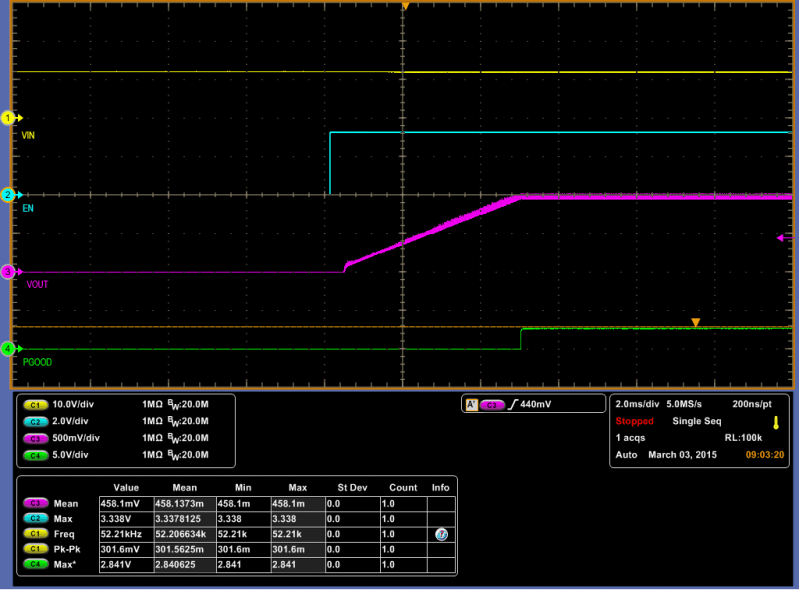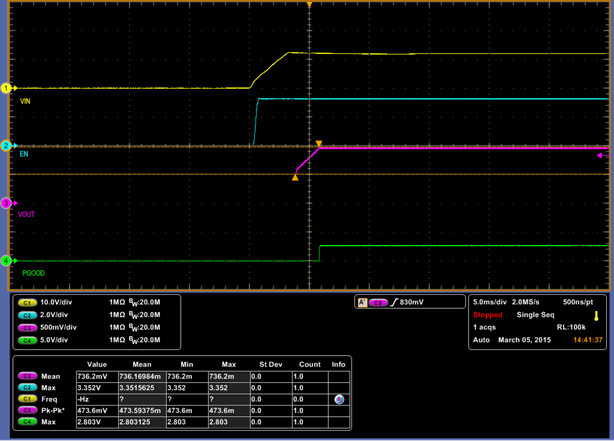SLUUB60B May 2015 – August 2021 TPS544B25 , TPS544C25
- Trademarks
- 1 Introduction
- 2 Description
- 3 EVM Electrical Performance Specifications
- 4 Schematic
- 5 Test Setup
- 6 EVM Configuration Using the Fusion GUI
- 7 Test Procedure
- 8 Performance Data and Typical Characteristic Curves
- 9 Fusion GUI
- 10EVM Assembly Drawing and PCB Layout
- 11List of Materials
- 12Revision History
8.6 Control On

Ch1 = VIN at 10 V/division, Ch2 = CNTL at 2 V/division, Ch3 = VOUT at 500 mV/division, Ch4 = PGOOD at 5 V/division
Figure 8-7 Start up from Control, 0.95-V Output at 12 VIN, 20-A Output
Ch1 = VIN at 10 V/division, Ch2 = CNTL at 2 V/division, Ch3 = VOUT at 500 mV/division, Ch4 = PGOOD at 5 V/division
Figure 8-8 0.5-V Pre-biase start up from Control, 0.95-V Output at 12 VIN, 0-A Output